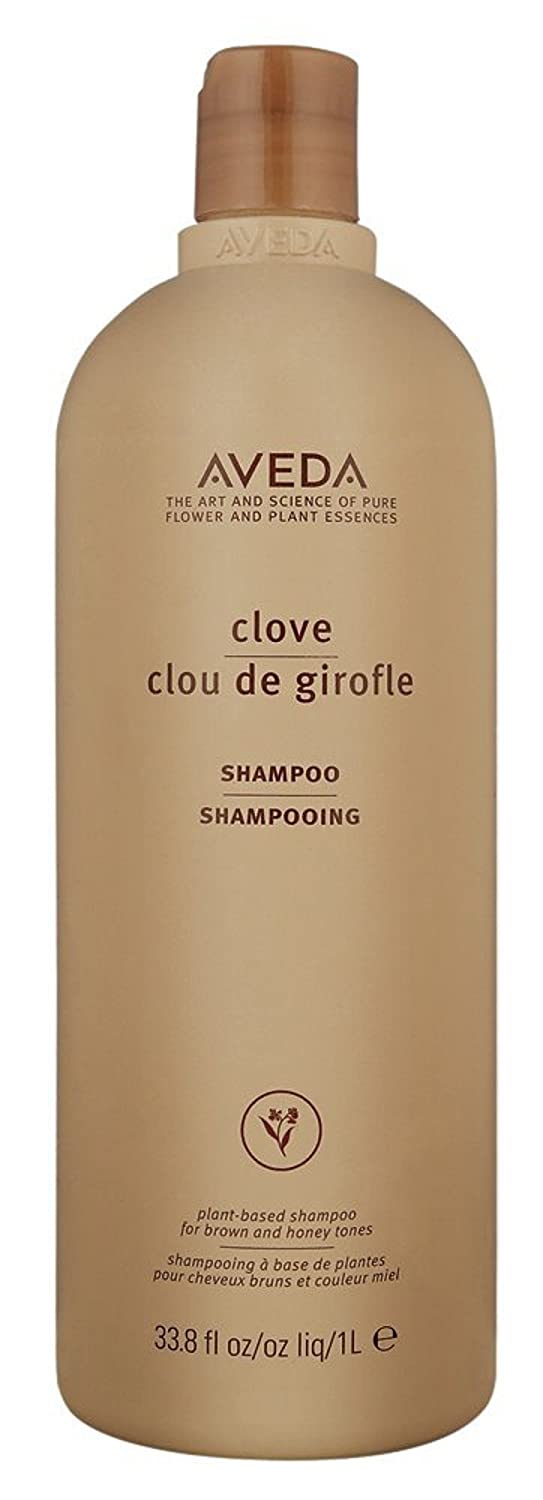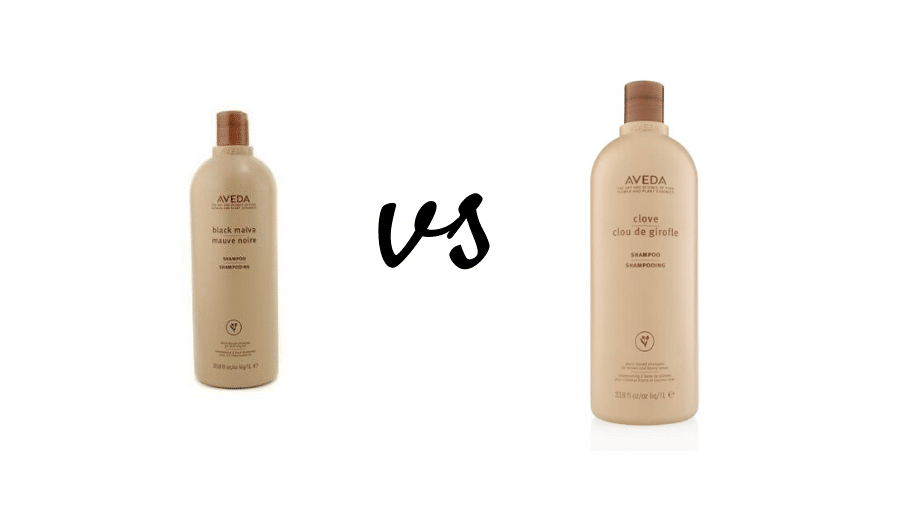Aveda Black Malva vs Clove: Which of the Two Brands Is Best for You?
Contents
If you’re looking to choose Aveda Black Malva vs Clove, you need to read this article to the end.
While writing a lot of these reviews, I’ve found that it’s a little easier to choose between two products from the same brand than it is to choose from two opposing brands.
But:
Sometimes, the functions are similar and the differential is just in price. Other times, it’s just one little thing missing in one that’s present in the other.
And it could be that one is designed for a specific use while the other is not.
Therefore:
You’ll learn more about Aveda Black Malva and Clove in this article. And by the time you get to the end, you should be able to choose the best between them.
Aveda Black Malva vs Clove – Comparison

If you’re looking to tone down the red in your dyed hair, then I’ll recommend the Black Malva Conditioner. It can cool down the red.
Clove is more suitable for brown hair and will encourage warmth. So if you’re trying to avoid the warmth, you’ll want to avoid Clove.
The Aveda Clove provides a darker/cooler tone while the Black Malva prevents brassy tones in darker shades. So, use Clove for if you have brunettes hair and Black Malva for brassy, warm tones.
Both Black Malva and Clove shampoo are designed to enhance natural or colored hair. You can also use the Black Malva to neutralize the brassy warm tones in dyed hair.
The Clove conditioner can help the root of the hair stay consistent. However, it may be too expensive if you don’t plan to use it for long. It also stains so you’ll need to be extra careful when using it.
If you’re looking to work on your brown hair, both may not work out well.
Read Other Comparisons:
- Aveda Invati vs Nioxin Hair Loss Brands: Which One Is Better?
- Monat vs Aveda: Which One Is Better for You?
Now, let’s go in-depth into the comparison.
Sit back and read carefully…
This section can help you decide which one is for you. So…
Here we go:
Pros and Cons of Malva and Clove Shampoos

They Both Can Darken the Hair
If you’re looking to get darker shades, then both Aveda Clove and the Black Malva will do you justice.
They don’t moisturize like other conditioners but can help you achieve your goal, which is to keep your dark highlights intact.
It should be noted that both Black Malva and Clove should not be used on grey or white hair. It can stain your hair or cause visible damages that may take some time or effort to correct.
Both Products are Pricey
As I mentioned before, both products are quite pricey. So, if you’re not planning to spend a lot on another shampoo or conditioner, you may be slightly turned off.
However, if you can manage it, both or either of them can last you for months. After the initial usage, all you have to do is use them once or twice a month to refresh your hair.
This way, you’re able to darken your ends, keep it shiny, glossy, and still be able to enjoy the bottle for a longer time.
Stains are Inevitable
As stated in the title, whichever you use out of the two will likely stain your hands and shower. For your hand, you can wear latex gloves so it doesn’t get to your hands.
However, your shower may not be spared but you can easily wash it off with soap.
And if you don’t have the latex gloves, you can purchase some disposable salon gloves to use. Or you can wash your hands with soap and it should go off if you can’t get any of the above.
Dry Hair from Using Both
When you use any of these two, especially the Black Malva, it can cause your ends to dry out. However, it’s easy to correct that.
After rinsing it out of your hair, apply your regular conditioner to your ends and allow it to sit for a few minutes. Then rinse it out and it should be okay for you.
Aveda Black Malva vs Clove: Ingredient List
The Aveda Clove Shampoo Ingredient List:
Next thing:
Now that you’re a little more familiar with the Aveda Clove Shampoo, you may want to know what the ingredients are. If so, here are the ingredients for you to study:
Aqueous (Water, Purified) Extracts: Clove Extract (Organically Grown), Coffee Extract (Organically Grown), Sweet Almond Extract (Organically Grown), Wild Cherry Bark Extract (Organically Grown), Aloe Barbadensis Extract (Organically Grown), Dipalmitoylethyl Hydroxyethylmonium Methosulfate (Palm), Stearyl Alcohol, Dimethicone Copolyol (Silica), Glycerin (Coconut), Behenamidopropyl Ethyldimonium Ethosulfate (Rapeseed), Distearyldimonium Chloride (Coconut), Babassu Oil, Hydrolyzed Wheat Protein, Hydrolyzed Wheat Starch, Tocopheryl Acetate, Oryzanol (Rice Bran), Steardimonium Hydroxypropyl Hydrolyzed Wheat Protein, Glyceryl Stearate (Coconut), Guar Hydroxypropyltrimonium Chloride (Guar Beans), Dicapryl Ether (Coconut), Cetyl Alcohol (Coconut), Cetrimonium Chloride (Mixed Plant), Cyclomethicone (Rapeseed), Cetyl Hydroxyethylcellulose (Cellulose), Sodium Citrate (Molasses), Citric Acid (Molasses), Fragrance, Diazolidinyl Urea, Annatto (Colorant), Caramel, Basic Brown 17 (Colorant), Basic Yellow 57 (Colorant), Basic Blue 99 (Colorant), Basic Red 76 (Colorant).
Aveda Black Malva Shampoo Ingredient List:
After showing you the ingredients in the Aveda Clove Shampoo, here is the one for the Black Malva. At least, if the ingredient list is part of your criteria for selection, you can now see which of the two is better.
The Black Malva has a slightly fewer amount of ingredients…for me, it’s not significant.
But still:
Aqueous (Water, Purified) Extracts: Black Malva Extract, Camellia Oleifera Extract, Sweet Almond Extract, Wild Cherry Bark Extract, Organically Grown Aloe Barbadensis Extract, Dipalmitoylethyl Hydroxyethylmonium Methosulfate, Stearyl Alcohol, Dimethicone Copolyol, Glycerin, Behenamidopropyl Ethyldimonium Ethosulfate, Disteryldimonium Chloride, Babassu (Orbignya Oleifera) Oil, Hydrolyzed Wheat Protein, Hydrolyzed Wheat Starch, Tocopheryl Acetate, Oryzanol, Stearyldimonium Hydroxypropyl Hydrolzed Wheat Protein, Glyceryl Stearate Guar Hydroxypropyltrimonium Chloride, Dicaprylyl Ether, Cetyl Alcohol, Cetrimonium Chloride, Cyclomethicone, Cetyl Hydroxyethylcellulose, Sodium Citrate, Citric Acid, Fragrance, Diazolidinyl Urea, Annatto (Colorant), Caramel (Colorant), Basic Brown 17 (Colorant), Basic Yellow 57 (Colorant), Basic Blue 99 (Colorant), Basic Red 76 (Colorant).
As you can see, the ingredients are slightly similar. However, there are a lot of differences in them so they work differently as I mentioned in the comparison above.
Related Article: Aveda vs Clinique: Which is better?
Aveda Black Malva vs Clove: Conclusion
As you can see, both products have their pros and cons. Choosing is therefore not about which one is cheaper. Instead, it’s all about what each one can do for your hair.
As long as you can get the right one for your hair, choosing shouldn’t be difficult. And you should definitely try to get the one that appeals to you, even if it’s expensive.
If you’re like me, you wouldn’t want to buy a cheaper alternative and discover later that it can’t work for you. I’ll generally buy anything I know will satisfy better than another even if it’s not cheap.
Also Read: Is L’Oreal Better than Wella?
We earn commissions if you purchase thru our link. Majority of products aren’t tested by the site owner (except a few). Content is from the research and feedback of users.



